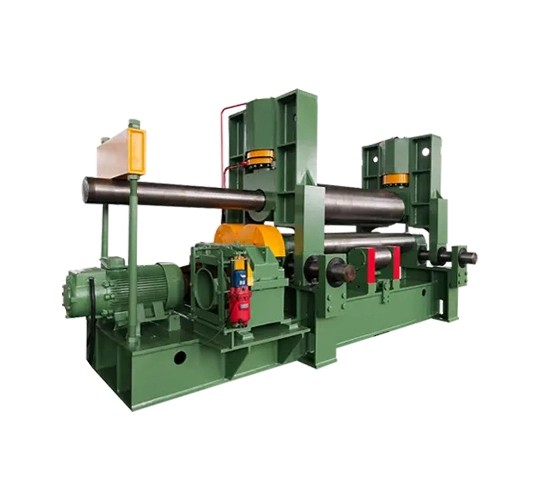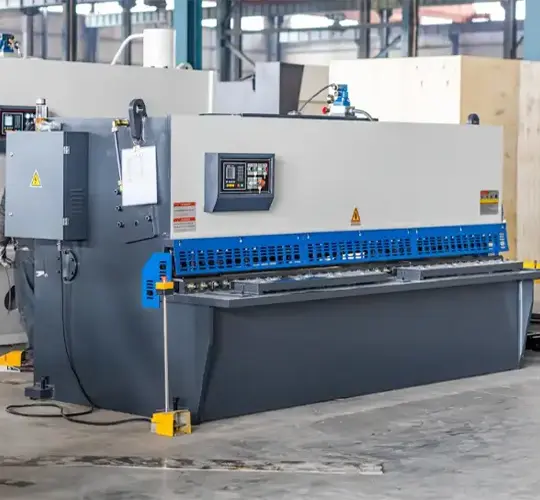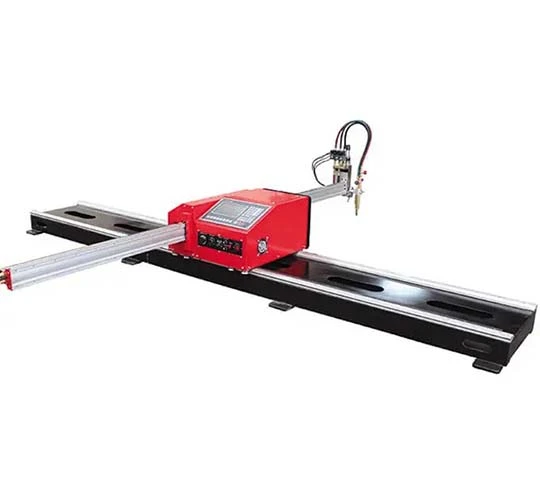Effective operation of plate rolling machines is critical for maximizing efficiency and minimizing errors in metal fabrication. The performance and longevity of these machines depend heavily on the operators' knowledge and adherence to proper procedures. This guide outlines safety protocols, operational steps, maintenance practices, and solutions to common issues, providing a thorough understanding of how to use a plate rolling machine safely and effectively.
Safety Operating Regulations
Safe operation of a plate rolling machine begins with strict adherence to established protocols. A designated individual should oversee the machine's management, ensuring operators are well-versed in its structure and performance. Operations must commence only after approval from responsible management personnel, following a thorough inspection of safety devices. Multi-person operations require clear direction from a dedicated coordinator to prevent miscommunication. During operation, operators must avoid clothing entanglement with the rollers and keep hands and feet away from the rollers and transmission components. Standing on either side of the workpiece is the safest position, and standing on finished or unprocessed workpieces is prohibited. Overloading the machine is strictly forbidden, and a machining allowance must be reserved at the end of processing. If work is interrupted, the clutch should be set to neutral. Tilting, resetting, or balancing the upper roll's lifting and overturning bearing should occur only after the main drive stops. The workplace must remain free of piled workpieces or debris, maintaining a clean and orderly environment. Upon completion of work, the power supply should be disconnected, and the power box locked to ensure safety.
Sheet Metal Rolling Procedure
In the CNC forging industry, standardized technical operation rules enhance production efficiency, prevent safety incidents due to improper handling, and extend the machine's service life. Following a structured procedure ensures consistent results and safe operation.
Preparations
Before operating the plate rolling machine, the working environment should be organized to maintain cleanliness and order. Operators must wear required protective gear, such as safety helmets and work clothing, ensuring garments are tidy to avoid entanglement with rollers. All machine components should be inspected to confirm they are in reliable working condition. The distance between work rolls must be adjusted precisely according to the plate thickness, avoiding overloading or processing workpieces beyond the machine's specified mechanical capacity. These preparatory steps create a safe and efficient setup for rolling operations.
During Operation
Clear signals and a designated coordinator are essential during operation to ensure smooth workflow. The machine should only be powered on once the workpiece is stably positioned. Operators must avoid placing hands on the rolled steel plate and ensure hands and clothing are not drawn into the rollers as the workpiece enters. Adjustments or measurements of size and roundness require stopping the machine, as performing these tasks during operation is prohibited. When measuring roundness, standing on the rolled cylinder is not allowed. For plates that are not sufficiently round, a machining allowance should be reserved at the plate's end to prevent the workpiece from falling and causing injury. Challenging workpieces, such as those with greater thickness, larger diameters, or higher hardness, should be processed through multiple small operations to achieve the desired shape. Small-diameter parts should be rolled in the middle of the rollers for optimal control.
Stopping Work
If abnormal sounds occur during operation, the machine must be stopped immediately for inspection and repair. Upon completing work, the switch should be turned off, and the power supply disconnected. The workpiece should be placed in a designated storage area to maintain an organized workspace. These steps ensure the machine is safely shut down and ready for future use.
Special Precautions
Regular maintenance of rolling components, particularly connections, is crucial for consistent performance. Assembly of the plate rolling machine should follow a systematic approach, prioritizing tasks from inside to outside and bottom to top, using the same tools or locations for efficiency. The assembly process must strictly adhere to design specifications, ensuring precise control of sizes and dimensions. Several factors influence the rolling process and require careful consideration.
Correcting Curvature Radius
The curvature radius of the workpiece must be adjusted to account for springback, which occurs due to elastic deformation, causing the radius to increase after rolling. To counteract this, increased downward pressure and reduction are necessary. Material hardening from cold plastic deformation increases strength and hardness while reducing plasticity, requiring additional force. The yield limit of the plate also affects the process; for example, if the material's yield limit exceeds the machine's design capacity, greater force and reduction are needed. Other factors influencing curvature, such as material properties and rolling conditions, require adjustments based on practical experience. Analyzing pressure force and reduction amounts provides a basis for controlling the rolling process, supporting both manual operation and automated systems.
Maintaining Plate Rolling Machines
Proper maintenance is essential for extending the service life of plate rolling machines and minimizing repair costs. Ensuring normal operation and regular lubrication prevents excessive wear and maintains performance. The electrical system should be properly grounded, with components routinely inspected and disassembled for maintenance. Damaged or failed parts must be replaced promptly, and excessively worn components should be swapped out to preserve functionality. Operators should monitor the temperature of machine parts during operation and establish a regular inspection and maintenance schedule. The work area must remain free of clutter, and the oxide layer on the machine's surface should be cleaned regularly. Adhering to the machine's lubrication system, as specified by the manufacturer, ensures smooth operation and reduces wear.
Lubrication Practices
Effective lubrication of transmission parts and sliding surfaces reduces power consumption and enhances machine longevity. The lubrication method depends on working conditions, typically involving box-type lubrication for gears and regular lubrication for sliding surfaces. Slider guide surfaces should be greased once per shift using a hand gun, while slider bearings between rollers receive one-time lubrication. The main drive gear, speed reducer, and transfer case use box-type lubrication with industrial gear oil, and roller slider bearings and guide boards employ lithium-based grease. Before each shift, all lubrication points must be serviced, and the speed reducer's lubricant level checked. The main drive speed reducer requires an oil change after the initial 150 hours of operation, followed by changes every 1500 hours or annually. The entire lubrication system should be cleaned after the first 150 hours and at least once yearly, with more frequent cleaning for continuous full-load operation.
Common Problems and Solutions
Workpiece Deformation
Barrel deformation, where the rolled cylinder is larger in the middle and smaller at the ends, is a common issue, particularly for medium and thin plates wider than a certain length. This deformation complicates welding and assembly, requiring shaping to meet process requirements. The primary cause is insufficient roller shaft rigidity, leading to uneven force distribution along the plate. To prevent this, selecting a machine with sufficiently rigid rollers is ideal, though structural limitations may restrict roller thickness. Arc correction, where rollers are slightly curved based on material and thickness, ensures uniform gaps and stress distribution. Adding auxiliary support rollers in the middle of the lower roll enhances rigidity, and combining arc correction with support rollers adapts to a wider range of plates. For machines without these features, rolling in sections, reducing upper roller pressure, using gaskets for auxiliary adjustment, or retrofitting support rollers can minimize deformation.
Roller Breakage
Roller wear progresses through run-in, stable wear, and severe wear stages, with severe wear leading to stress concentration and potential fractures. Proper run-in during trial operation establishes elastic contact conditions, reducing friction and stabilizing wear. Initial fractures in the upper roller often result from excessive pressure or insufficient strength, mitigated by allowing swing space and gradual rolling. Lower roller fractures stem from inadequate run-in, increasing torque and stress, which can be prevented by thickening the roller and idling it beforehand. Mid-term fractures, more common, arise from weld imperfections or excessive wear due to small-diameter rolling, requiring weld polishing, step-by-step rolling, and surface hardness improvements. Late-stage fractures occur after fatigue stress accumulates, accelerated by overload; enhancing roller hardness and reducing contact stress extends service life.
Springback After Rolling
Springback, common in cold rolling, causes the rolled sheet to revert slightly due to elastic deformation, particularly in thin, large-diameter, or high-alloy materials. To compensate, the cylinder should be rolled slightly smaller than specified, followed by multiple rewinds at the desired curvature. Springback depends on the material's elastic modulus, yield limit, drum diameter, and plate thickness, as well as bending angle and mold size. Compensation methods adjust the rolling geometry, while stretch bending applies tensile force to reduce springback. Pressure correction adds force post-bending, and increasing roundness by a small percentage accounts for elastic recovery, ensuring accurate final dimensions.
Hydraulic Oil Cylinder Failure
Hydraulic oil cylinder issues disrupt normal operation, often due to insufficient oil supply from worn pump parts, increasing leakage and reducing speed. Inadequate piston bearing area in the cylinder layout slows movement, typically from poor pre-work preparation. Overflow valve failure, where the spool sticks open, diverts oil back to the tank, reducing cylinder flow. Small accumulator volume or low charging pressure, and inaccurate cylinder-load connections, also cause slow movement. Analyzing specific symptoms and addressing them—such as pump maintenance, layout adjustments, or valve repairs—resolves these issues effectively.
Rolling Conical Workpieces
Rolling conical workpieces on standard plate rolling machines can be achieved by installing a cone rolling device, which simplifies the process and is available on many three- or four-roll machines. Alternatively, shaping rollers into a conical form with a slope generates lateral force, requiring lateral reduction gears and quenched block wheels, though this is more complex. For ease and precision, a CNC plate rolling machine is recommended, offering simplified operation and adaptability for conical rolling tasks.
 English
English 日本語
日本語 한국어
한국어 français
français Deutsch
Deutsch Español
Español русский
русский Türkçe
Türkçe português
português العربية
العربية Polska
Polska हिंदी
हिंदी Indonesia
Indonesia



